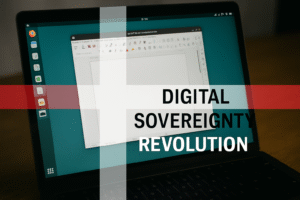In the ever-evolving world of finance, traditional investments like stocks and bonds no longer hold the monopoly on investor interest. Over the years, alternative investment strategies have emerged, offering savvy investors new avenues to diversify their portfolios, seek higher returns, and hedge against market volatility. One of the most iconic examples of early alternative investments was the British Rail Pension Fund’s (BRPF) groundbreaking move to invest in art in the 1970s. While that decision remains a key historical moment, today’s landscape of alternative investments is more diverse than ever.
In this article, we’ll explore the evolution of alternative investment strategies— from BRPF’s bold art investment to modern-day options like cryptocurrencies, NFTs, real estate, and sports memorabilia. We’ll highlight the opportunities and risks associated with each, providing insights into what investors in 2024 should consider.

Table of Contents
ToggleThe Rise of Alternative Investments: From Art to Cryptocurrencies
The British Rail Pension Fund and the Birth of Art Investment

The British Rail Pension Fund’s decision to allocate 3% of its portfolio to art in 1974 was a groundbreaking move for institutional investing. At the time, art was considered an unconventional asset, primarily owned by wealthy individuals or corporate collections. BRPF’s foray into art was driven by economic uncertainty, high inflation, and a stagnating stock market—factors that prompted the fund to seek returns in an asset not directly correlated to traditional financial markets.
The outcome was impressive. BRPF achieved an 11% annual return over 25 years, outperforming many traditional investments during the same period. However, it wasn’t without its challenges—liquidity issues, market opacity, and conflicts of interest between advisors and auction houses raised concerns.
While BRPF’s art investment remains a milestone, it also served as a precursor for the modern wave of alternative investments we see today.
Alternative Investment Strategies in 2024: A Whole New World
Fast forward to 2024, and the world of alternative investments has dramatically expanded beyond art. Investors today have access to a broad range of alternative assets that weren’t even conceivable 50 years ago. These investments serve various purposes, from providing diversification to delivering outsized returns. Let’s take a look at some of the top alternative investment Opportunities currently attracting attention.
Cryptocurrencies: Digital Gold or Fool’s Gold?
Cryptocurrencies, particularly Bitcoin and Ethereum, have shaken up the investment world. Once seen as speculative assets, they have now become a part of many institutional portfolios. Cryptocurrencies offer decentralized, borderless, and highly liquid investment opportunities, making them appealing in an increasingly digitized global economy.
Pros:
- High potential for returns.
- Decentralized and free from government control.
- Blockchain technology ensures transparency and security.
Cons:
- Extremely volatile—prices can rise and fall drastically in a short time.
- Regulatory risks, as governments worldwide struggle to create policies around crypto.
- No intrinsic value, unlike physical assets such as real estate or gold.
NFTs: The New-Age Art and Collectibles
Non-Fungible Tokens (NFTs) exploded onto the scene in recent years as a new way to own digital assets, ranging from artwork to music to virtual real estate. NFTs are built on blockchain technology and provide proof of ownership for unique items. Much like BRPF’s art investment, NFTs appeal to collectors and investors seeking rare, one-of-a-kind assets with the potential for high appreciation.
Pros:
- Ownership of unique digital assets.
- Growing market in art, gaming, and entertainment industries.
- Easy to trade on global NFT marketplaces.
Cons:
- Highly speculative; the value of NFTs can be subjective.
- Limited liquidity compared to other investments.
- Still a relatively immature market with limited historical data.
Real Estate: The Tried and True Asset
While real estate isn’t new, innovative forms of real estate investing have emerged in 2024. REITs (Real Estate Investment Trusts) and fractional ownership platforms allow smaller investors to own shares of commercial real estate, while crowdfunding sites make it easy to invest in properties worldwide.
Pros:
- Tangible asset with potential for capital appreciation and rental income.
- Hedge against inflation and market volatility.
- Various types of real estate investments (residential, commercial, industrial).
Cons:
- Liquidity can be an issue—selling property takes time.
- High upfront costs, particularly in direct real estate investments.
- Property values can fluctuate based on economic conditions.
Read more here on – Real Estate as a Service
Sports Memorabilia and Collectibles: The New Generation of Art
As with BRPF’s art investment, today’s collectors are flocking to sports memorabilia and rare collectibles, which have surged in popularity. Trading cards, autographed jerseys, and even game-worn shoes from sports legends are now hot commodities at auctions, much like fine art.
Pros:
- Rare and unique items with sentimental value.
- Growing interest and rising prices in the collector’s market.
- Diversifies a portfolio with a non-traditional asset.
Cons:
- Highly illiquid and difficult to sell on short notice.
- Value can be subjective and driven by collector interest.
- Lack of historical data for long-term performance.
Commodities: Gold and Beyond
Gold remains one of the oldest alternative investments, often used as a hedge against inflation and currency devaluation. However, in 2024, investors are also looking at other commodities like silver, platinum, and even lithium, which is essential for the electric vehicle market.
Pros:
- Tangible assets with intrinsic value.
- Hedge against inflation and currency fluctuations.
- Global market with high demand for precious metals.
Cons:
- Prices can be volatile and influenced by geopolitical events.
- Storage and insurance costs for physical commodities.
- Limited yield, as these assets don’t generate income.
Get to know more about – Sovereign Gold Bonds
The Pros and Cons of Alternative Investments in 2024
Pros:
- Diversification: Alternative investments typically do not move in tandem with traditional markets, offering a way to reduce portfolio risk.
- Potential for High Returns: Some alternative assets, like cryptocurrencies or rare collectibles, can provide outsized returns compared to stocks and bonds.
- Hedge Against Inflation: Tangible assets like gold, real estate, and art are often viewed as hedges against inflation, helping to preserve wealth during economic downturns.
Cons:
- Liquidity Issues: Many alternative assets, like art, real estate, and collectibles, are not easily liquidated, which can be problematic if investors need quick access to cash.
- Lack of Regulation: Cryptocurrencies and NFTs operate in largely unregulated markets, creating risks related to fraud, security, and volatility.
- Valuation Challenges: Determining the intrinsic value of assets like art, sports memorabilia, and NFTs can be difficult, leading to market speculation and potential bubbles.
Is Alternative Investing Right for You?
As we look forward to 2024, it’s clear that alternative investments have become an integral part of modern portfolios. From art and real estate to cryptocurrencies and collectibles, these assets provide opportunities for diversification, inflation protection, and potentially higher returns. However, like BRPF’s experience with art, alternative investments come with their own set of risks—liquidity challenges, market volatility, and a lack of historical data, to name a few.
Explore more – Index Funds – Simple Investment Strategy
For investors, the key is to approach these opportunities with careful consideration, thorough research, and an understanding of the unique risks involved. Whether it’s Bitcoin, an NFT, or a vintage sports jersey, the world of alternative investments offers both promise and peril, making it essential to stay informed and diversified in 2024.

Jugaad on Two Wheels: The Hilarious Bike Parcel Hack in Karnataka
The Great Karnataka Bike Parcel Hack: A Jugaad Masterclass #RapidoParcel: In a creative yet controversial move, ride-hailing platform Rapido has found a way around Karnataka’s

Denmark’s Digital Sovereignty Revolution: Linux and LibreOffice Lead the Way
Introduction to Denmark’s Bold Move In June 2025, Denmark’s Ministry of Digital Affairs made headlines by embracing digital sovereignty, ditching Microsoft Windows and Office 365

🏏Sports as a Business Strategy: Insights from Vijay Mallya’s RCB Ownership
🧠 Sports as a Business Strategy (Tool) In modern business, few platforms offer better engagement and emotional connection than sports. From football clubs in Europe

🙏 Apologies in Leadership: Vijay Mallya Public Apology
🧠 Introduction: The Role of Apologies in Leadership In the corporate world, apologies aren’t signs of weakness—they’re strategic acts of leadership. When made with sincerity

Audiobook Production Costs: Navigating Recording Artists, Studio Expenses, and AI’s Impact
The audiobook industry is booming, with over 130 million listeners in the U.S. alone in 2021 and a growing global appetite for audio content. Producing

Media Trial of Vijay Mallya: How Public Perception Shaped Vijay Mallya’s Legacy
Introduction: Media’s Influence on Business Narratives In today’s hyper-connected world, media narratives can make or break a business reputation. For Vijay Mallya, once known as

